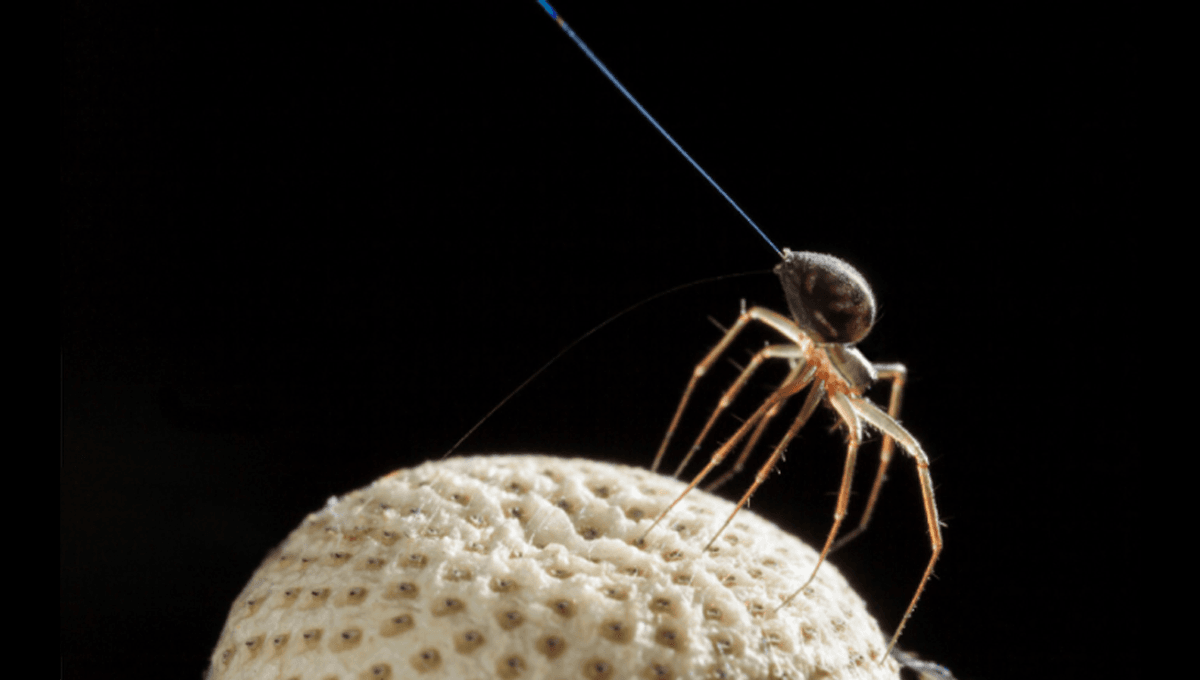
Regardless of where you stand on the spider fear scale, there’s no denying that these arachnids exhibit a remarkable array of really cool behaviors. From building their own trapdoors to mimicking flowers, spiders exploit their niches with incredible adaptations. While you might think of these niches as under garden pots and the corners of your house you can’t reach with dusters, spiders have also taken to the skies.
While it might be the eight legs that freak people out the most, ballooning is a somewhat different way of getting about. In the past, the ballooning method was poorly understood, thought to mainly involve the wind – even Charles Darwin himself questioned how so many spiders came to land on the HMS Beagle on a calm day. Eventually, researchers figured out that electric fields are involved.
A spider holding onto a thin strand of silk senses electric fields via tiny hairs called trichobothria. When the field is strong enough, they launch themselves into the air. Which begs the question: why?
Ballooning is typically seen in young spiders who need to disperse away from the hatching site to find areas without so many other spiders, such as their parents and siblings, to compete with. Being a spiderling also has the advantage of being more lightweight than a full-grown adult, and thus able to go much further. Some species are even able to disperse hundreds of kilometers using this method.
Researchers have discovered another behavior known as tiptoeing, where the spider stands on the ends of its legs and holds its abdomen into the air. In an experiment, the team found spiders tip-toed and even managed to take off with no airflow, but lost the ability when the electric fields were turned off.
“Previously, drag forces from wind or thermals were thought responsible for this mode of dispersal, but we show that electric fields, at strengths found in the atmosphere, can trigger ballooning and provide lift in the absence of any air movement. This means that electric fields as well as drag could provide the forces needed for spider ballooning dispersal in nature.” explains lead researcher Dr Erica Morley, an expert in sensory biophysics, in a statement in 2018.
So don’t worry, spider fearers – if you want to stop them ballooning into you, just find the electrical field off switch.
Source Link: "Ballooning" Spiders Can Get Airborne As Well As Creeping Up Walls